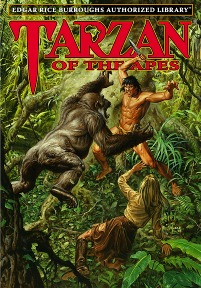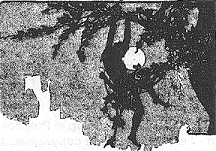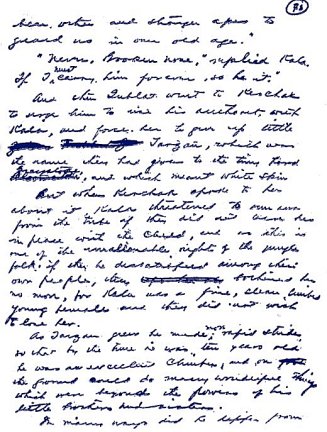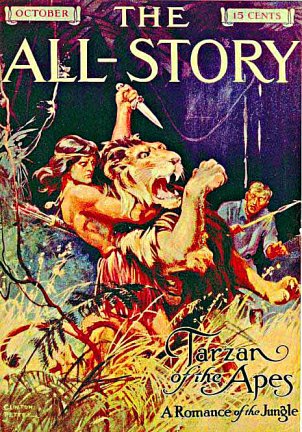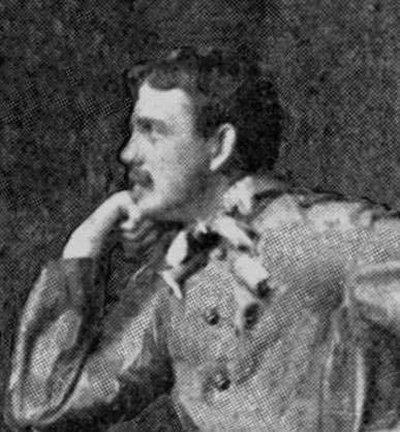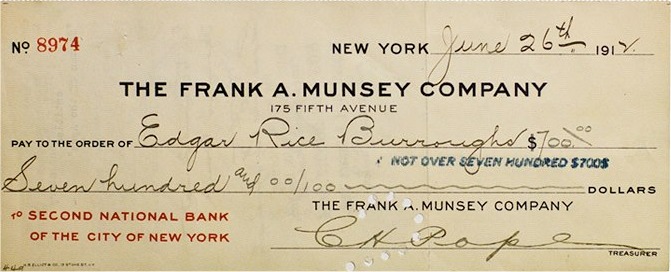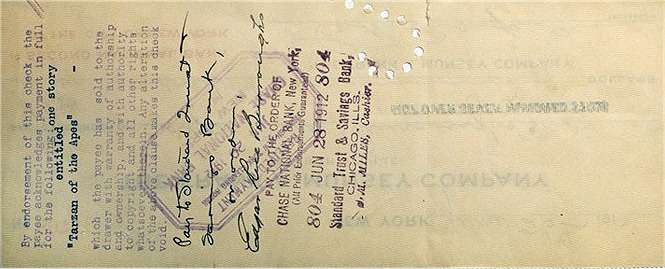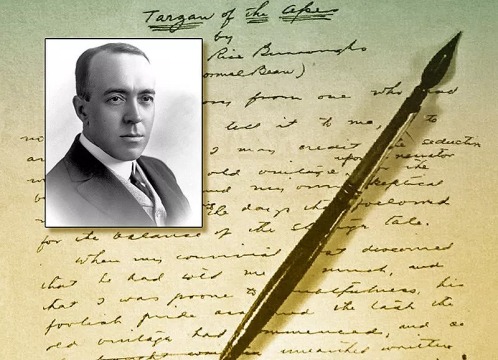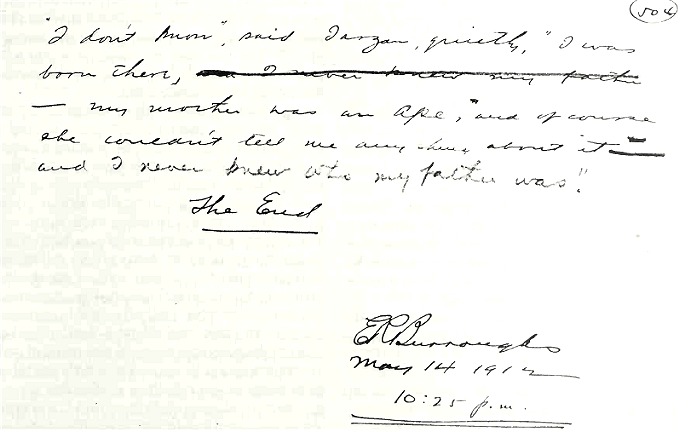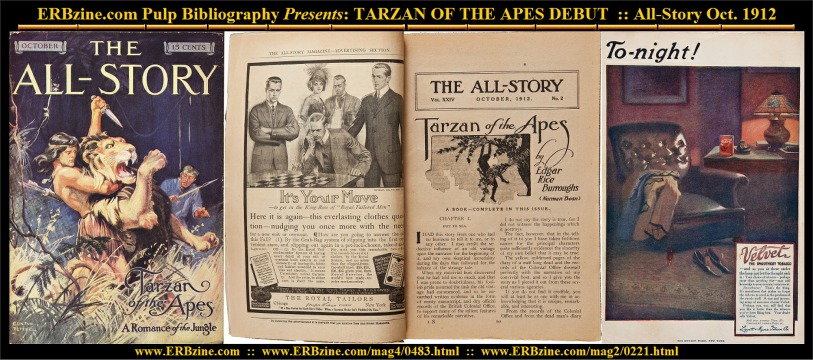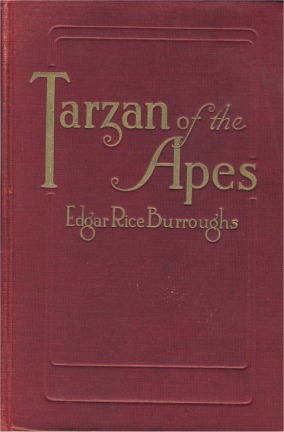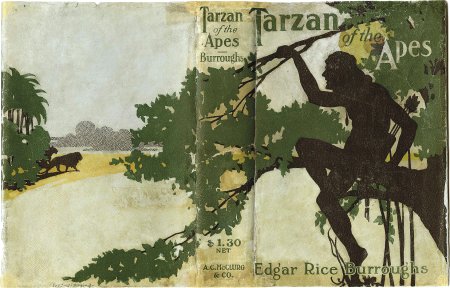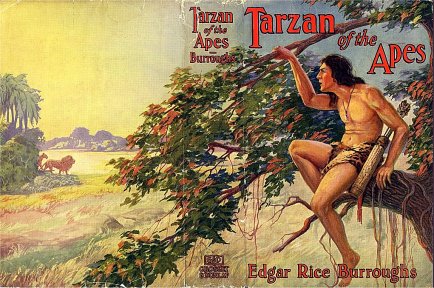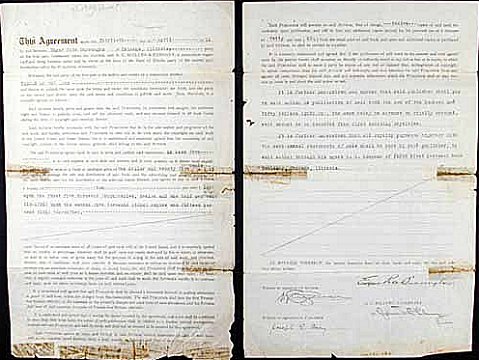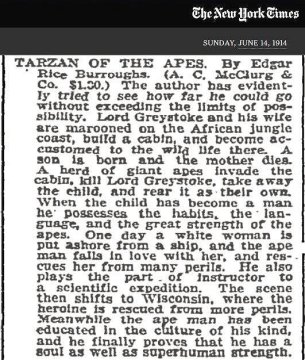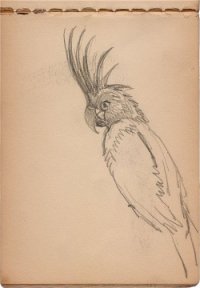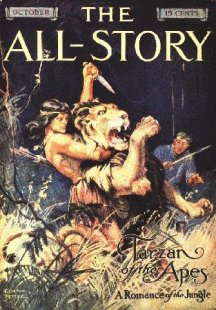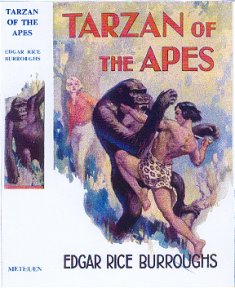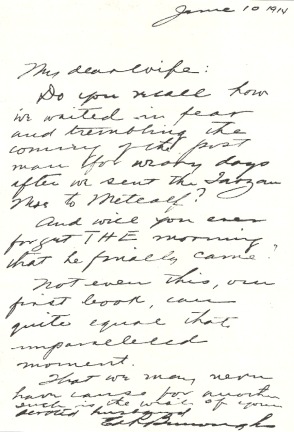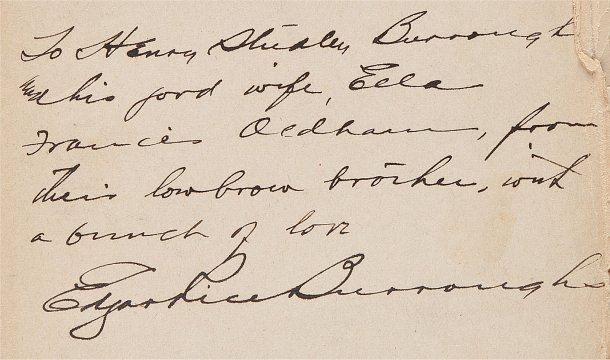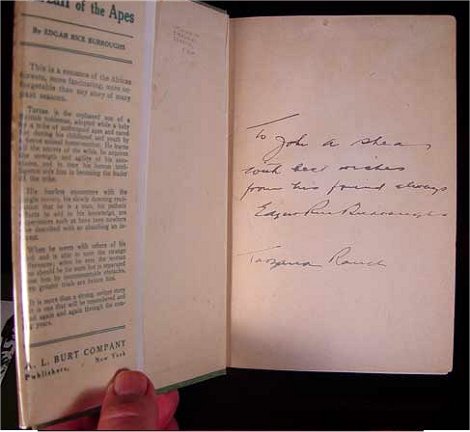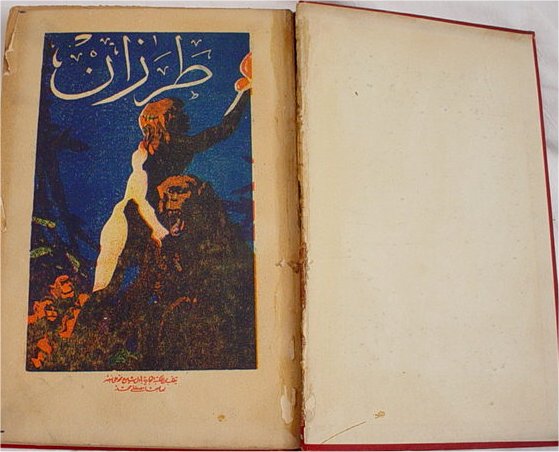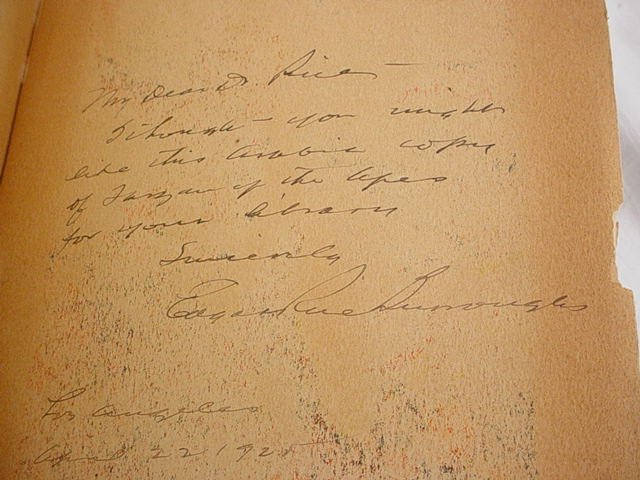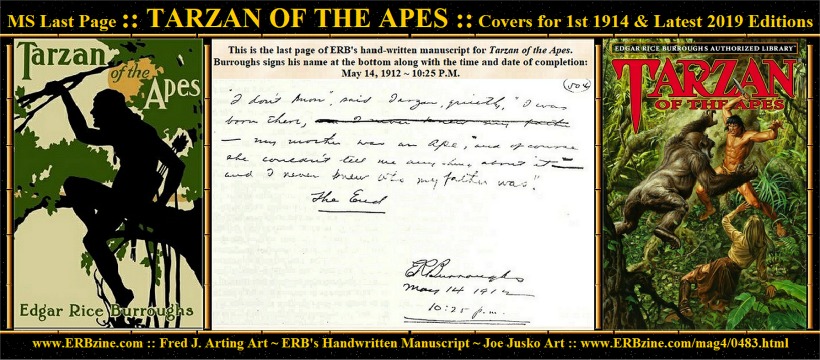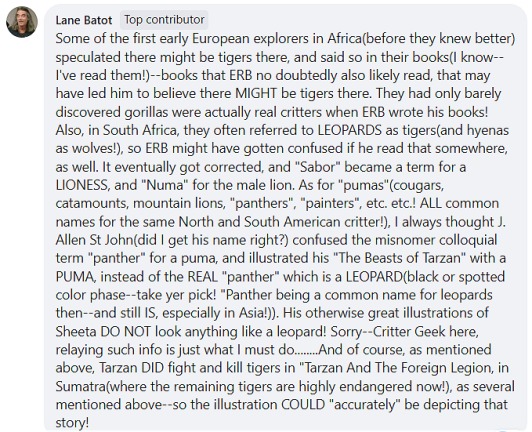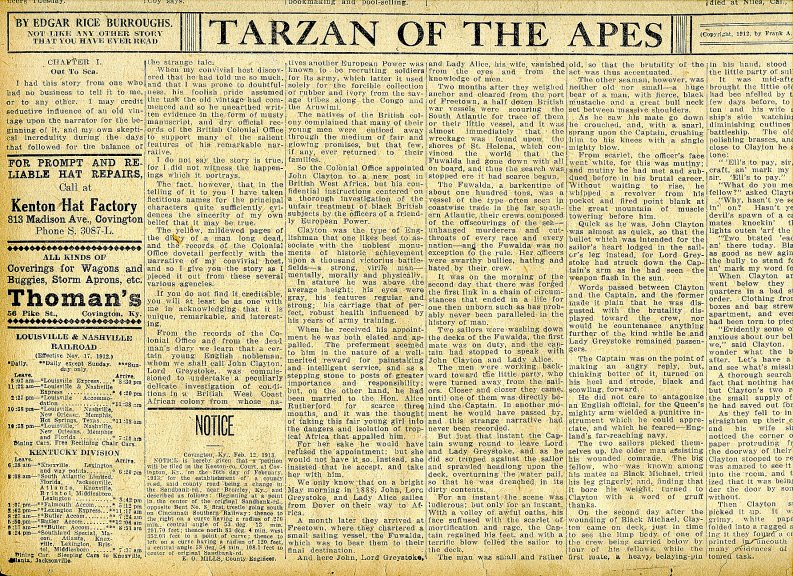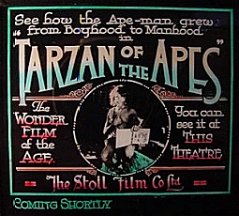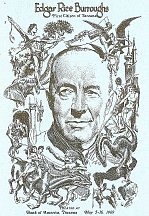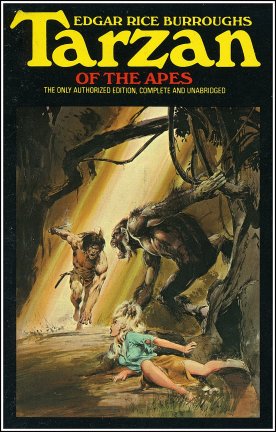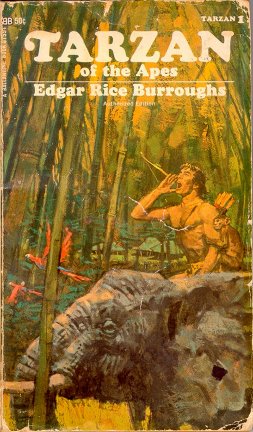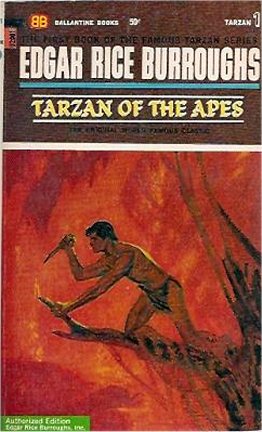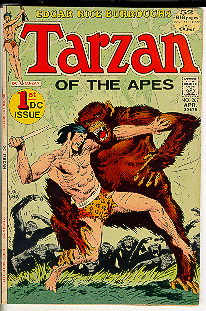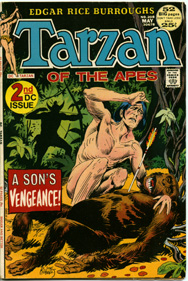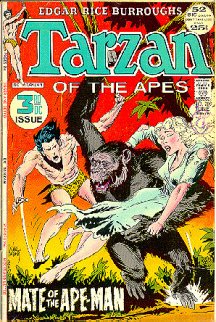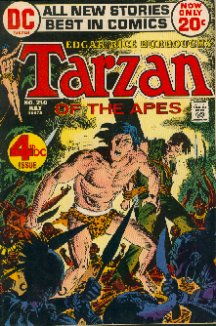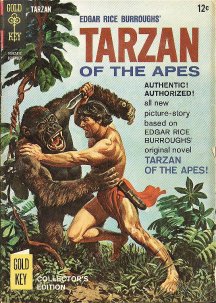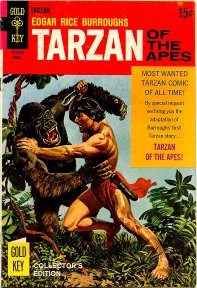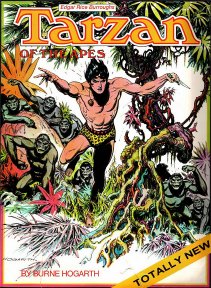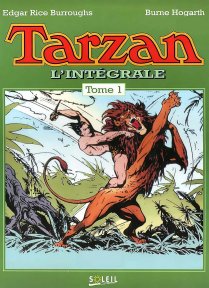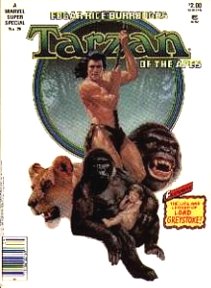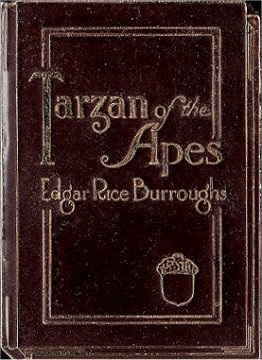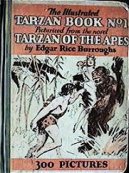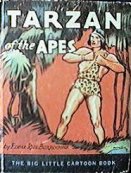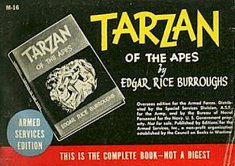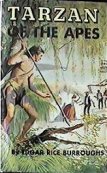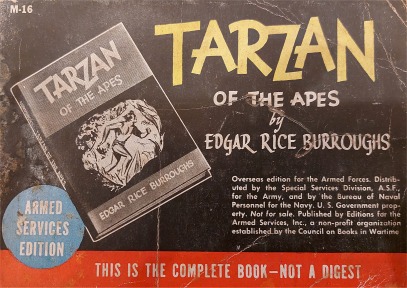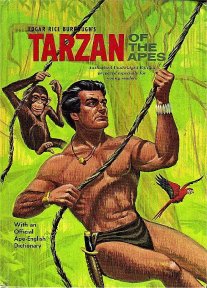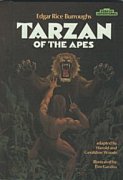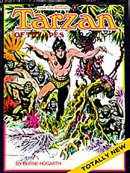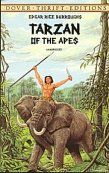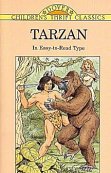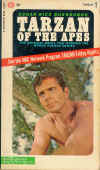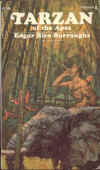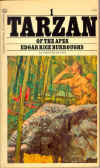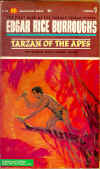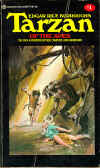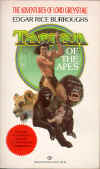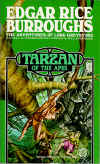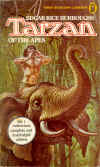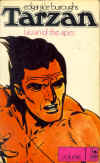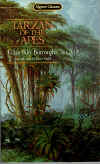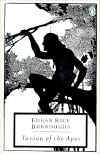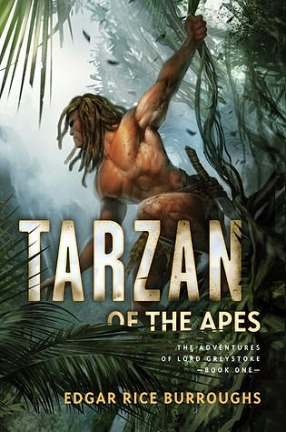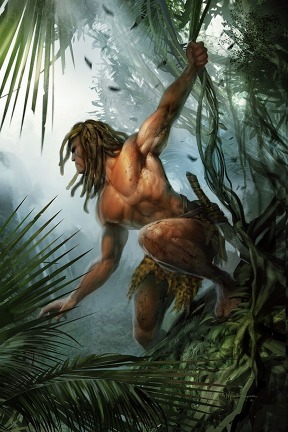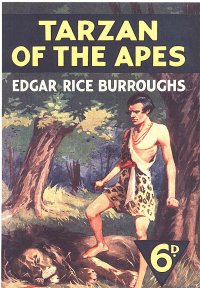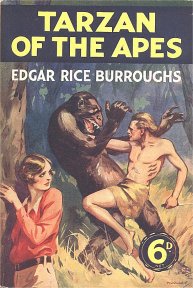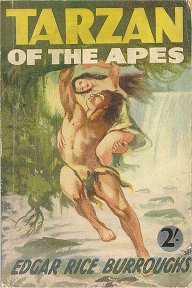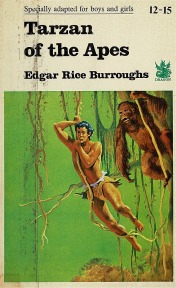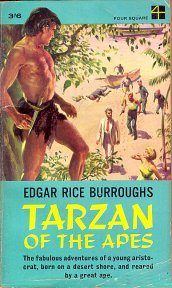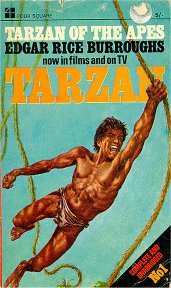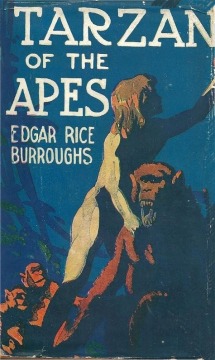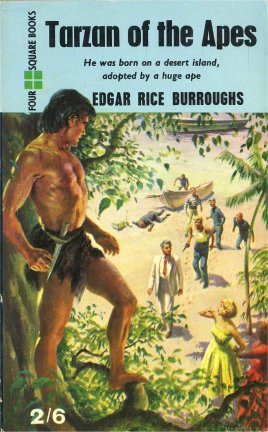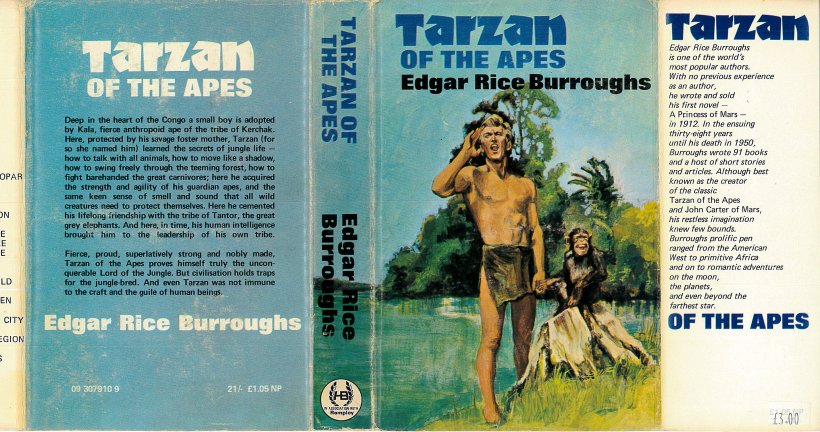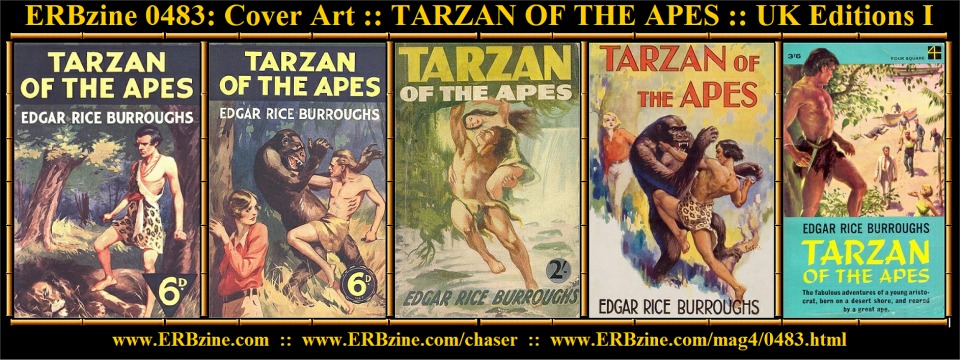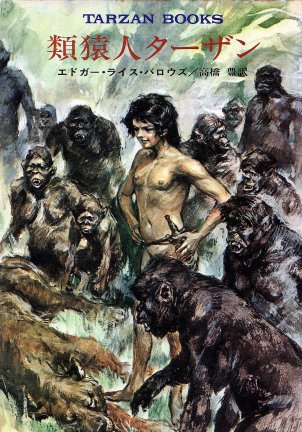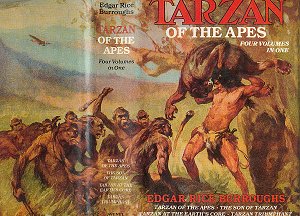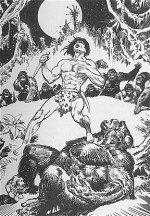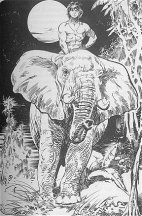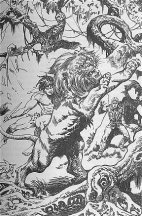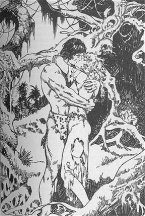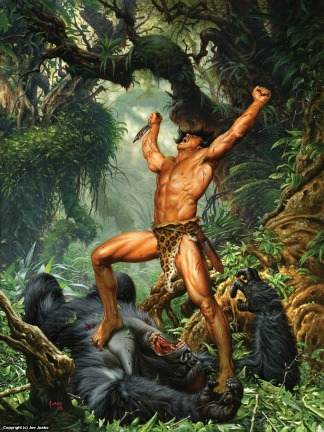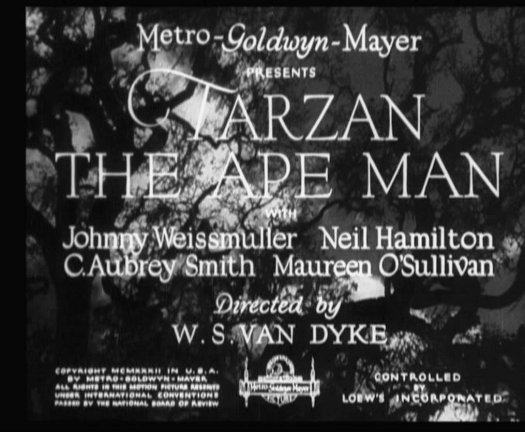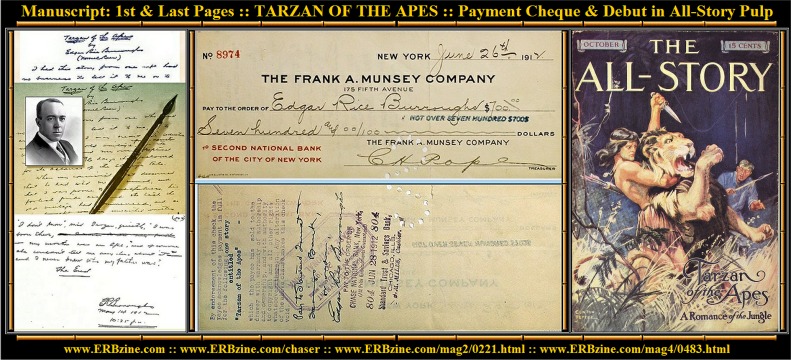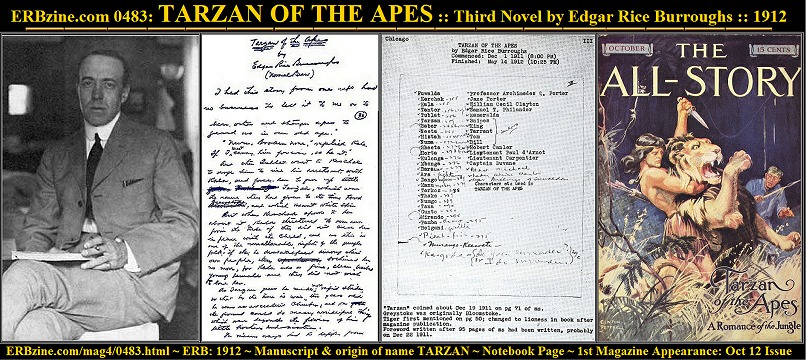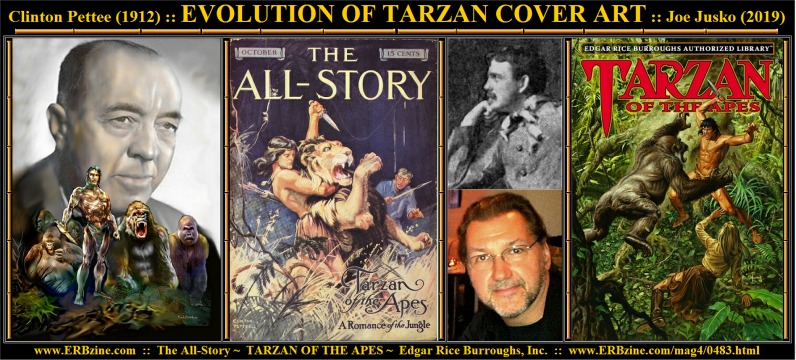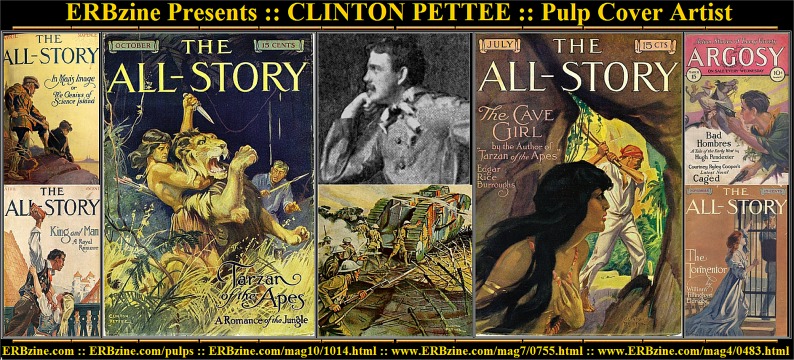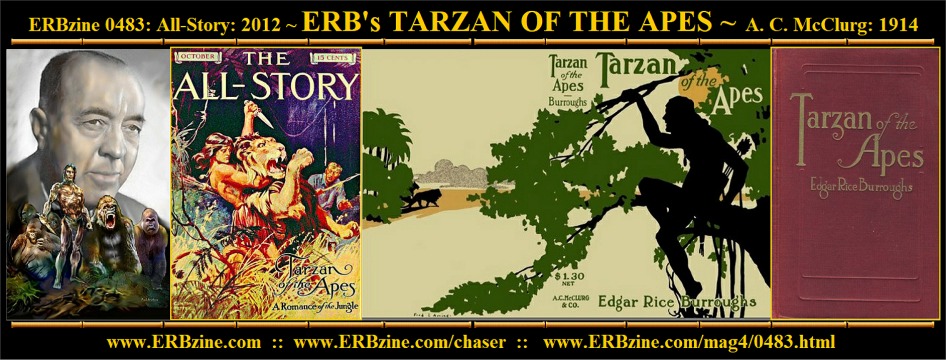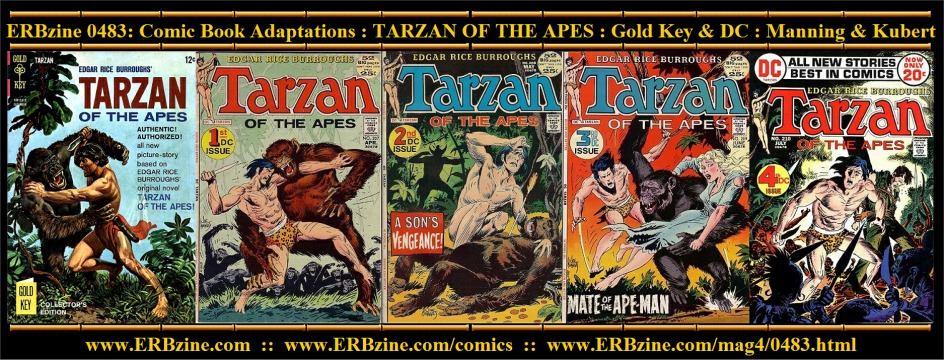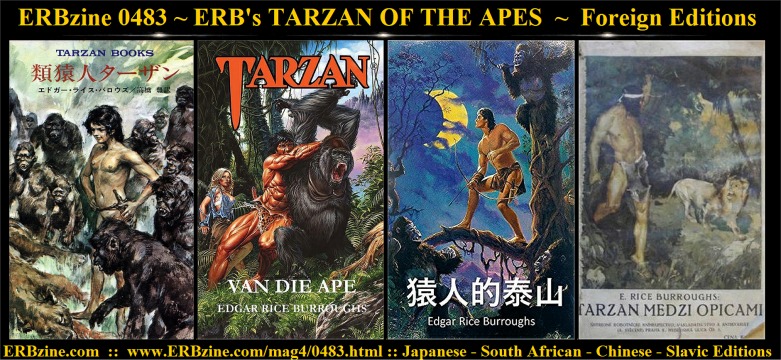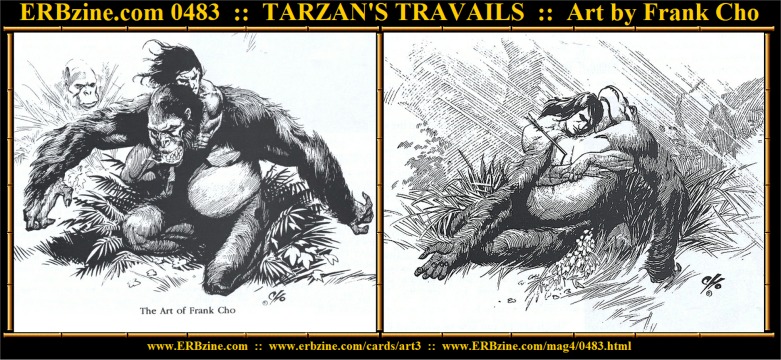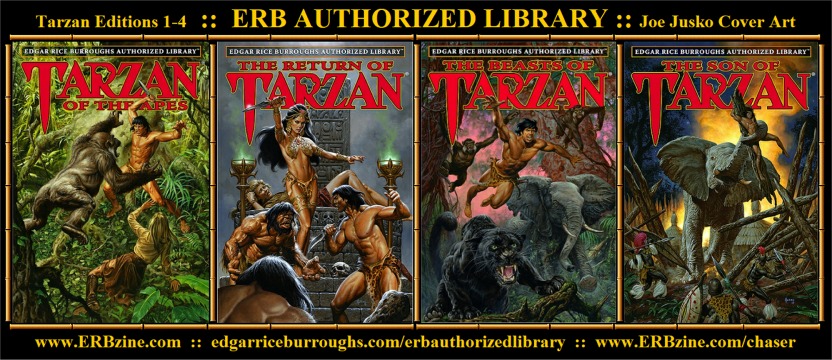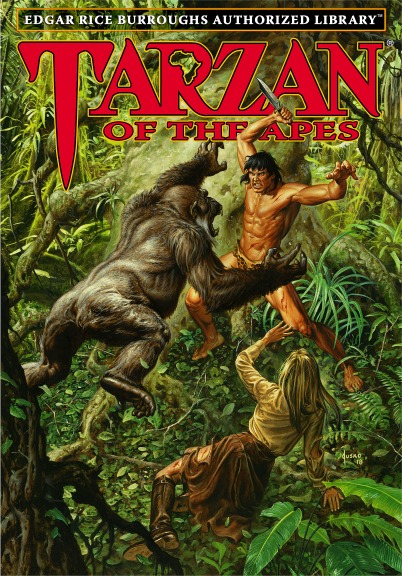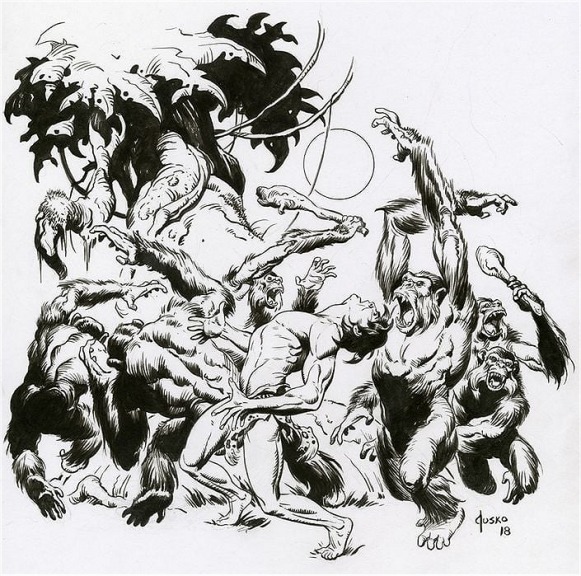The Tarzan™ Series
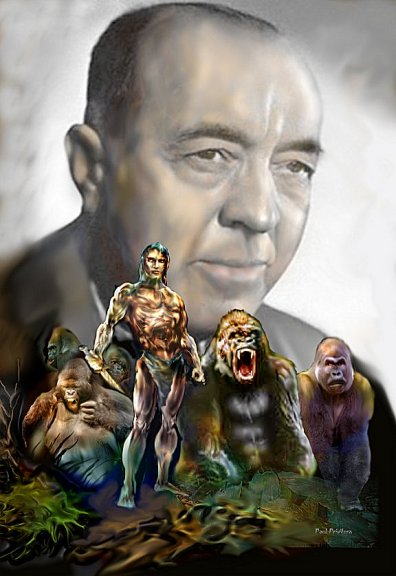 Tarzan
is the son of a British Lord and Lady who were marooned on the West coast
of Africa by mutineers. When Tarzan was a year old, his mother died of
natural causes, and his father was killed by Kerchak, leader of the ape
tribe into which Tarzan was adopted. Tarzan's tribe of apes is known as
the Mangani, Great Apes of a species unknown to science. Kala is his ape
mother. Tarzan (White-skin) is his ape name; his English name is John Clayton,
Lord Greystoke (the formal title is Viscount Greystoke according to Burroughs
in Tarzan, Lord of the Jungle; Earl of Greystoke in later, non-canonical
sources, notably the 1984 movie Greystoke). In fact, Burroughs, as narrator
of Tarzan of the Apes, describes both Clayton and Greystoke as fictitious
names – implying that, within the fictional world that Tarzan inhabits,
he may have a different real name. Tarzan
is the son of a British Lord and Lady who were marooned on the West coast
of Africa by mutineers. When Tarzan was a year old, his mother died of
natural causes, and his father was killed by Kerchak, leader of the ape
tribe into which Tarzan was adopted. Tarzan's tribe of apes is known as
the Mangani, Great Apes of a species unknown to science. Kala is his ape
mother. Tarzan (White-skin) is his ape name; his English name is John Clayton,
Lord Greystoke (the formal title is Viscount Greystoke according to Burroughs
in Tarzan, Lord of the Jungle; Earl of Greystoke in later, non-canonical
sources, notably the 1984 movie Greystoke). In fact, Burroughs, as narrator
of Tarzan of the Apes, describes both Clayton and Greystoke as fictitious
names – implying that, within the fictional world that Tarzan inhabits,
he may have a different real name.
As a young adult, Tarzan meets a young American woman,
Jane Porter, who along with her father and others of their party is marooned
at exactly the same spot on the African coast where Tarzan's parents were
twenty years earlier. When she returns to America, he leaves the jungle
in search of her, his one true love. In later books, Tarzan and Jane marry
and he lives with her for a time in England. They have one son, Jack, who
takes the ape name Korak ("the Killer"). Tarzan is contemptuous of the
hypocrisy of civilization, and he and Jane return to Africa, making their
home on an extensive estate that becomes a base for Tarzan's later adventures.
In Tarzan, Burroughs created an extreme example of a hero
figure largely unalloyed with character flaws or faults. He is described
as being Caucasian, extremely athletic, tall, handsome, and tanned, with
grey eyes and black hair. Emotionally, he is courageous, loyal and steady.
He is intelligent and learns new languages easily. He is presented as behaving
ethically, at least by Burroughs' definitions, in most situations, except
when seeking vengeance under the motivation of grief, as when his ape mother
Kala is killed in Tarzan of the Apes, or when he believes Jane has been
murdered in Tarzan the Untamed. He is deeply in love with his wife and
totally devoted to her; in numerous situations where other women express
their attraction to him, Tarzan politely but firmly declines their attentions.
When presented with a situation where a weaker individual or party is being
preyed upon by a stronger foe, Tarzan invariably takes the side of the
weaker party. In dealing with other men Tarzan is firm and forceful. With
male friends he is reserved but deeply loyal and generous. As a host he
is likewise generous and gracious. As a leader he commands devoted loyalty.
In contrast to these noble characteristics, Tarzan's philosophy
embraces an extreme form of "return to nature". Although he is able to
pass within society as a civilized individual, he prefers to "strip off
the thin veneer of civilization", as Burroughs often puts it.[6] His preferred
dress is a knife and a loincloth of animal hide, his preferred abode is
a convenient tree branch which happens to be nearby when he desires to
sleep, and his favored food is raw meat, killed by himself; even better
if he is able to bury it a week so that putrefaction has had a chance to
tenderize it a bit.
Tarzan's primitivist philosophy was absorbed by countless
fans, amongst whom was Jane Goodall, who describes the Tarzan series as
having a major influence on her childhood. She states that she felt she
would be a much better spouse for Tarzan than his fictional wife, Jane,
and that when she first began to live among and study the chimpanzees she
was fulfilling her childhood dream of living among the great apes just
as Tarzan did. |
|
Tarzan of the Apes
The novel tells the story of John Clayton, born in the western
coastal jungles of equatorial Africa to a marooned couple from England,
John and Alice (Rutherford) Clayton, Lord and Lady Greystoke. Adopted as
an infant by the she-ape Kala after his parents died (his father is killed
by the savage king ape Kerchak), Clayton is named "Tarzan" ("White Skin"
in the ape language) and raised in ignorance of his human heritage.
Feeling alienated from his peers due to their physical
differences, he discovers his true parents' cabin, where he first learns
of others like himself in their books, with which he eventually teaches
himself to read.
On his return from one visit to the cabin, he is attacked
by a huge gorilla which he manages to kill with his father's knife, although
he is terribly wounded in the struggle. As he grows up, Tarzan becomes
a skilled hunter, gradually arousing the jealousy of Kerchak, the ape leader.
Later, a tribe of black Africans settles in the area,
and Kala is killed by one of its hunters. Avenging himself on the killer,
Tarzan begins an antagonistic relationship with the tribe, raiding its
village for weapons and practicing cruel pranks on them. They, in turn,
regard him as an evil spirit and attempt to placate him.
The twelve short stories Burroughs wrote later and collected
as Jungle Tales of Tarzan occur in the period immediately following
the arrival of the natives, the killing of Kala, and Tarzan's vengeance.
Finally Tarzan has amassed so much credit among the apes of the tribe that
the envious Kerchak at last attacks him. In the ensuing battle Tarzan kills
Kerchak and takes his place as "king" of the apes. Subsequently, a new
party of whites is marooned on the coast, including Jane Porter, the first
white woman Tarzan has ever seen. Tarzan's cousin, William Cecil Clayton,
unwitting usurper of the ape man's ancestral English estate, is also among
the party. Tarzan spies on the newcomers, aids them, and saves Jane from
the perils of the jungle. Absent when they are rescued, he is introduced
further into the mysteries of civilization by French Naval Officer Paul
D'Arnot, whom he saves from the natives. D'Arnot teaches Tarzan French
and how to behave among white men, as well as serving as his guide to the
nearest colonial outposts.
Ultimately, Tarzan travels to Jane's native Baltimore,
Maryland only to find that she is now in the woods of Wisconsin. Tarzan
finally meets Jane in Wisconsin where they renew their acquaintance and
he learns the bitter news that she has become engaged to William Clayton.
Meanwhile, clues from his parents' cabin have enabled D'Arnot to prove
Tarzan's true identity. Instead of claiming his inheritance, Tarzan chooses
rather to conceal and renounce his heritage for the sake of Jane's happiness.
|

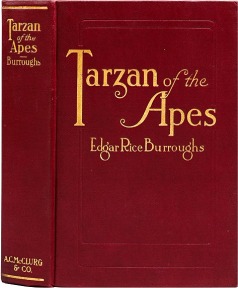
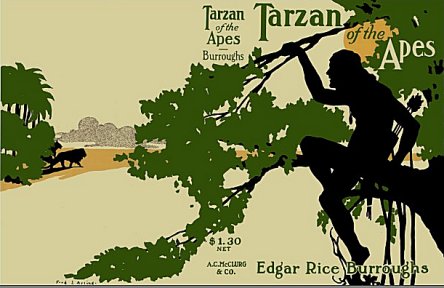 ,
,